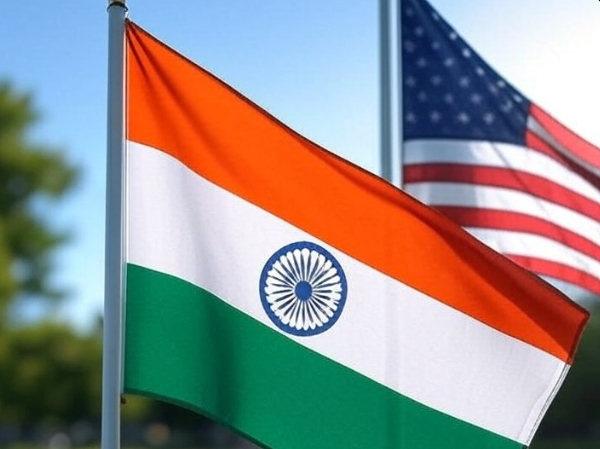India-US Trade Deal:India and the United States have concluded a crucial round of trade talks in New Delhi, covering key issues like digital trade, market access for agriculture, steel tariffs, and defense exports. With a $500 billion trade target in sight and the G7 summit around the corner, both nations are racing to finalize an interim deal before the July 9 tariff deadline.
India-US Trade Deal
In a significant diplomatic development, closed-door trade negotiations between India and the United States concluded this week in New Delhi. The four-day discussions reportedly resulted in substantial progress, aiming to pave the way for a broader bilateral trade agreement. Both nations are targeting a considerable expansion in their trade relationship, from the current $190 billion to a projected $500 billion by 2030.
The negotiations covered a wide range of issues, focusing on trade facilitation, tariff rationalization, and enhancing bilateral cooperation across critical sectors. Key highlights of the dialogue included addressing non-tariff barriers and expanding market access for agricultural and industrial products. The United States is said to have requested more open market access in India for items such as wheat, corn, and dairy products. However, Indian negotiators reportedly resisted some of these demands. On the other hand, premium U.S. exports like almonds, walnuts, and pistachios may see exemptions, reflecting a possible compromise.
Digital trade also featured prominently in the talks. Both countries are exploring ways to deepen cooperation in data sharing and improve customs procedures, recognizing the sector’s growing contribution to their economies. Additionally, discussions reportedly included defense exports and energy collaboration, underlining the strategic nature of the India-US partnership.
One point of contention has been the high steel tariffs imposed by the United States. India, a significant exporter of steel and related metals, has urged Washington to ease the steep 50% tariff levied on these goods. This remains a critical issue in the trade discussions, and its resolution could determine the success of the broader deal.
As the world watches, the two countries are working against a tight timeline. A 90-day suspension of retaliatory tariffs imposed by the US is set to expire on July 9. Both sides are pushing to finalize at least an interim agreement before this deadline. Indian External Affairs Minister Dr. S. Jaishankar, speaking to the French publication Le Figaro, expressed optimism, stating, “We are hopeful of reaching an agreement before the tariff suspension ends on July 9.”
This interim deal, expected before the upcoming G7 summit in Canada, may include provisions for a second round of discussions later in the year. Prime Minister Narendra Modi and U.S. President Donald Trump are anticipated to meet on the sidelines of the summit, which could provide the political momentum needed to clinch the agreement.
These negotiations are part of India’s broader strategy to secure favorable trade agreements with major global players. In addition to the U.S., India is also in discussions with the European Union and recently made significant progress on a free trade agreement (FTA) with the United Kingdom, with legal vetting currently underway.
The current round of India-US trade negotiations stems from earlier discussions held during Prime Minister Modi’s visit to Washington in February. Since then, both sides have been engaged in intensive deliberations, signaling their commitment to achieving a strategic trade breakthrough.
While official details remain scarce due to the sensitive nature of the talks, the direction is clear. A comprehensive trade deal between India and the U.S. could serve as a cornerstone of their evolving economic and strategic relationship. With key areas such as defense, digital trade, agriculture, and energy in focus, the emerging agreement is expected to solidify a multi-dimensional partnership between the two democracies.
As both nations navigate complex trade-offs and political sensitivities, the coming weeks will be crucial. A successful interim agreement at the G7 could signal the beginning of a deeper, more resilient economic alliance in an increasingly multipolar world.
Disclaimer:
This article is based on publicly available information and media reports. Details of the ongoing negotiations have not been officially confirmed by either government, and final outcomes may differ from the discussions reported.

